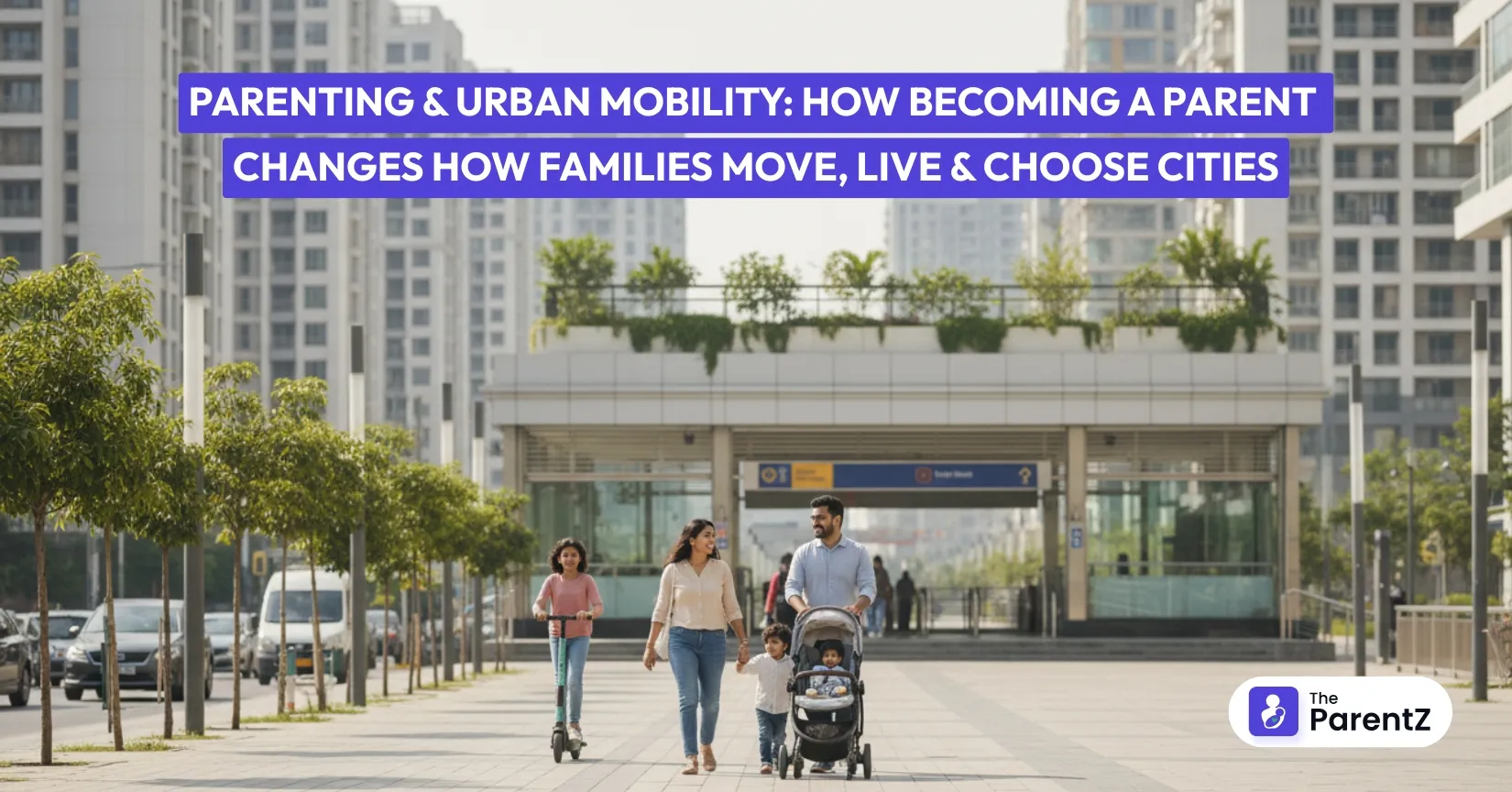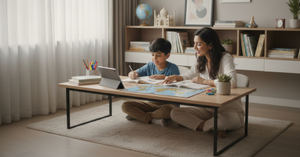Remember when you could just hop on your bike and reach anywhere in 15 minutes? Or take the metro without worrying about stroller-friendly entrances? Before kids, moving around the city felt easy. Maybe you lived in that trendy neighbourhood far from your office because the rent was cheap and the cafes were great.
Then your baby arrived. And suddenly, everything changed.
Parenting Shifts the Map: How Urban Life Changes
The arrival of a child often brings new priorities. Suddenly, questions like “Is there a park nearby?” or “How safe are the pavements?” start mattering more than the distance to your favourite coffee shop. In cities like Bengaluru, Mumbai, or Delhi, parents base many lifestyle decisions on these small but vital details.
Take the housing hunt for example: Earlier, a couple might have searched for affordable rent close to the office. Now, the search covers access to good schools, green play areas, traffic safety, and the availability of child-centric facilities. This isn’t just a ‘nice-to-have’; it’s a necessity shaped by the daily realities of raising children in bustling Indian metros.
How Mobility Needs Change with Kids
Once you become a parent, you notice how public spaces and transport work (or don’t work) for families. Cities with smooth sidewalks, reliable public transport, and shaded walkways become inviting. But in many Indian cities, parents still struggle with:
- Uneven footpaths and potholes that make stroller rides bumpy or even unsafe.
- Heavy traffic and lack of pedestrian crossings, which means constant anxiety during school drops or park outings.
- Unpredictable or overcrowded buses and metros, making travel with kids tough.
For Indian parents, mobility means more than getting from point A to B. It’s about safety, comfort, and inclusion for children, and peace of mind for the family.
School Runs, Parks, and Play: The Real-Life Impact
Daily routines reflect the challenges of urban living. Parents in cities such as Mumbai or Chennai often spend 1-2 hours daily just on school runs, juggling traffic jams or walking long distances because public transport options aren’t child-friendly. Many report spending less than two hours a day with their children due to long commutes and a lack of nearby recreational spaces.
The result?
- Kids miss out on outdoor time and social play.
- Parents face “time poverty,” which is a lack of free time to bond with children because of travel demands.
- Families sometimes prefer moving to smaller cities or outer suburbs for a slower, more child-friendly pace of life.
Choosing the Right City: What Indian Families Look For
When families get a chance to move cities, many now consider:
- Proximity to reputed schools and preschools.
- Green spaces and safe play zones.
- Family-friendly culture and safety (especially for women and children).
- Reliable healthcare, especially paediatric services.
- Less pollution and better air quality.
Indian cities like Pune, Bengaluru, and Hyderabad are often ranked higher by families for their mix of better schooling, tech jobs, and lifestyle offerings. Hill towns such as Dharamshala or Ooty are also gaining in popularity for their slower pace, cleaner air, and stronger community vibes.
The Urban Parenting Dilemma: Work-Life and Support
In urban India, most parents are no longer supported by extended families like grandparents, making parenting more demanding. Fast-paced city life means that both parents might be working, with little time left for children, often relying on care centers or digital content.
This changes the city’s role from being just a place to work to being an active partner in the family’s well-being. Cities that support flexible work, offer accessible parks, and plan for child safety are becoming more attractive for today’s parents.
Small Steps to Better Urban Living for Families
While the challenges are real, Indian cities are slowly responding.Urban planners are starting to think about parks within walking distance, safer crossings near schools, better lighting, and even pram-friendly public transport (like low-floor buses). Some community groups in Bengaluru and Delhi have successfully lobbied for more green areas and traffic calming zones near schools.
As families, a few things we can do include:
- Choosing active modes like walking or cycling for short trips where possible.
- Supporting local initiatives for safer neighbourhoods.
- Giving feedback to city planners and participating in community meetings.
Conclusion
Parenthood changes how families move and choose where to live. The need for safer streets, play spaces, and a welcoming city vibe becomes central. The cities that adapt to these needs, by thinking family-first, will always have happier, healthier, and more loyal citizens.








Be the first one to comment on this story.